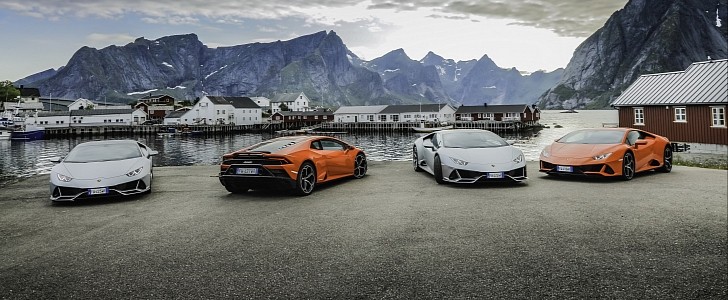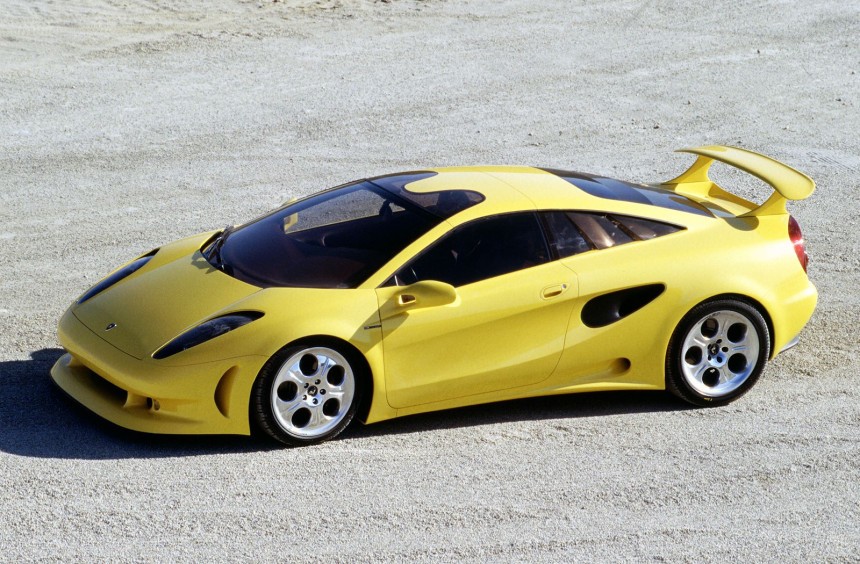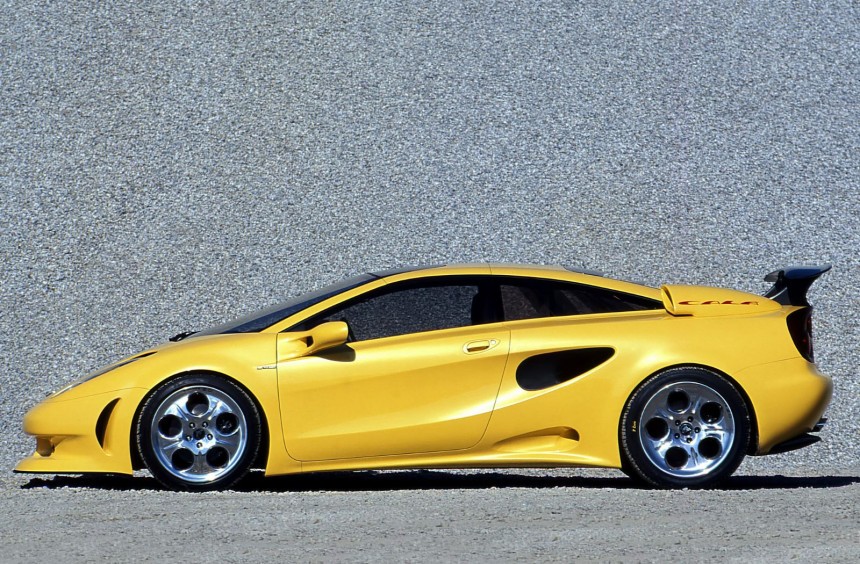As Lamborghini celebrates the production of the 20,000th Huracán, a look back at the V10 powered “Baby Lambo” reveals a history that stretches back 35 years. It was on April 23, 1987, when the struggling maker of exotic sports cars was acquired by Lee Iacocca for $25 million. This Italian gambit was a sideshow to the larger $1.5 billion acquisition by Chrysler of AMC from Renault, which also netted the iconic Jeep brand.
The cash infusion by Chrysler made possible in-house production of carbon fiber with the installation of an autoclave at Sant’ Agata Bolognese factory, set the stage for the development of the Countach-replacing V12 Diablo and an expansion of the assembly plant to accommodate a second model, the P140 V10-powered Baby Lambo. The Italian operation was also charged with engineering a monster aluminum-block 8.0-liter V10 engine for the Dodge Viper.
As originally envisioned, the P140 would be a compact two-seat rear-drive coupe with a 4.0-liter V10 mounted amidships that would be the successor to the V8-powered Jalpa. The four-valve overhead cam engine was developed by Lamborghini engineers in just seven months.
Designed by Marcello Gandini in 1987, the P140 concept featured an aluminum body with as many as four prototypes developed through the late 1980s and early 1990s. Gandini’s angular design for the P140 looked like the offspring of a Countach/Diablo marriage. You can also see hints of other Gandini projects of the era, like the Cizeta Moroder and Bugatti EB110 in the look of the P140.
The first prototype, rendered in orange, was tested at Nardo hitting a top speed of 183 mph (295 kph). The third prototype in white, which was crashed in testing, has been restored and is on display at Lamborghini’s factory museum.
The collapse of the supercar market in the early 1990s and Chrysler’s subsequent sale of Lamborghini to MegaTech in 1994 scuttled the car’s production plan.
The idea for a Baby Lambo wasn’t finished. While MegaTech lacked the resources to put the P140 into production, Giorgetto Giugiaro’s ItalDesign developed the Calá concept car with similar dimensions and a mid-mounted evolution of the P140’s V10 engine boasting 395 horsepower. Making its debut at the 1995 Geneva Motor Show, it appeared on the ItalDesign stand, but not Lamborghini’s. Calá sported more voluptuous lines, carbon fiber and aluminum construction and a targa top.
The idea of a Baby Lambo languished until the company was purchased by Volkswagen Group under Ferdinand Piëch and aligned with Audi as its parent. With the return of proper investment from a major manufacturer, Lamborghini was able to not only replace the aging V12 Diablo with the Murciélago in 2001, but also realize the long-held dream of adding a V10 stablemate in the form of the all-wheel-drive Gallardo in 2003. Like the P140 and Calá, the Gallardo would use aluminum for its body and monocoque, while the V10 engine would be re-engineered with its displacement pushed out to 5.0 liters.
While Gallardo would share much of mechanical package with the Audi R8 (which in addition to the V10, had an entry-level V8 version), the look echoed the original P140. Its angular design also mimicked the style of its larger Murciélago sibling. Gallardo is the second largest selling model in Lamborghini history, with 14,022 produced over a 10-year production run from 2003-2013.
With the introduction of Aventador in 2011 as the Murciélago successor, the stage was set for a similar remake of the Gallardo with the debut of the Huracán in 2014. Like the cars that preceded it, the Huracán, in true Baby Lambo style, took on the more angular lines and aggressive stance of its big brother. In a production run that has yet to reach the same length as Gallardo, the Huracán has reached the 20,000-unit mark to become the largest volume model in the company’s history.
As originally envisioned, the P140 would be a compact two-seat rear-drive coupe with a 4.0-liter V10 mounted amidships that would be the successor to the V8-powered Jalpa. The four-valve overhead cam engine was developed by Lamborghini engineers in just seven months.
The first prototype, rendered in orange, was tested at Nardo hitting a top speed of 183 mph (295 kph). The third prototype in white, which was crashed in testing, has been restored and is on display at Lamborghini’s factory museum.
The collapse of the supercar market in the early 1990s and Chrysler’s subsequent sale of Lamborghini to MegaTech in 1994 scuttled the car’s production plan.
The idea for a Baby Lambo wasn’t finished. While MegaTech lacked the resources to put the P140 into production, Giorgetto Giugiaro’s ItalDesign developed the Calá concept car with similar dimensions and a mid-mounted evolution of the P140’s V10 engine boasting 395 horsepower. Making its debut at the 1995 Geneva Motor Show, it appeared on the ItalDesign stand, but not Lamborghini’s. Calá sported more voluptuous lines, carbon fiber and aluminum construction and a targa top.
While Gallardo would share much of mechanical package with the Audi R8 (which in addition to the V10, had an entry-level V8 version), the look echoed the original P140. Its angular design also mimicked the style of its larger Murciélago sibling. Gallardo is the second largest selling model in Lamborghini history, with 14,022 produced over a 10-year production run from 2003-2013.
With the introduction of Aventador in 2011 as the Murciélago successor, the stage was set for a similar remake of the Gallardo with the debut of the Huracán in 2014. Like the cars that preceded it, the Huracán, in true Baby Lambo style, took on the more angular lines and aggressive stance of its big brother. In a production run that has yet to reach the same length as Gallardo, the Huracán has reached the 20,000-unit mark to become the largest volume model in the company’s history.










































